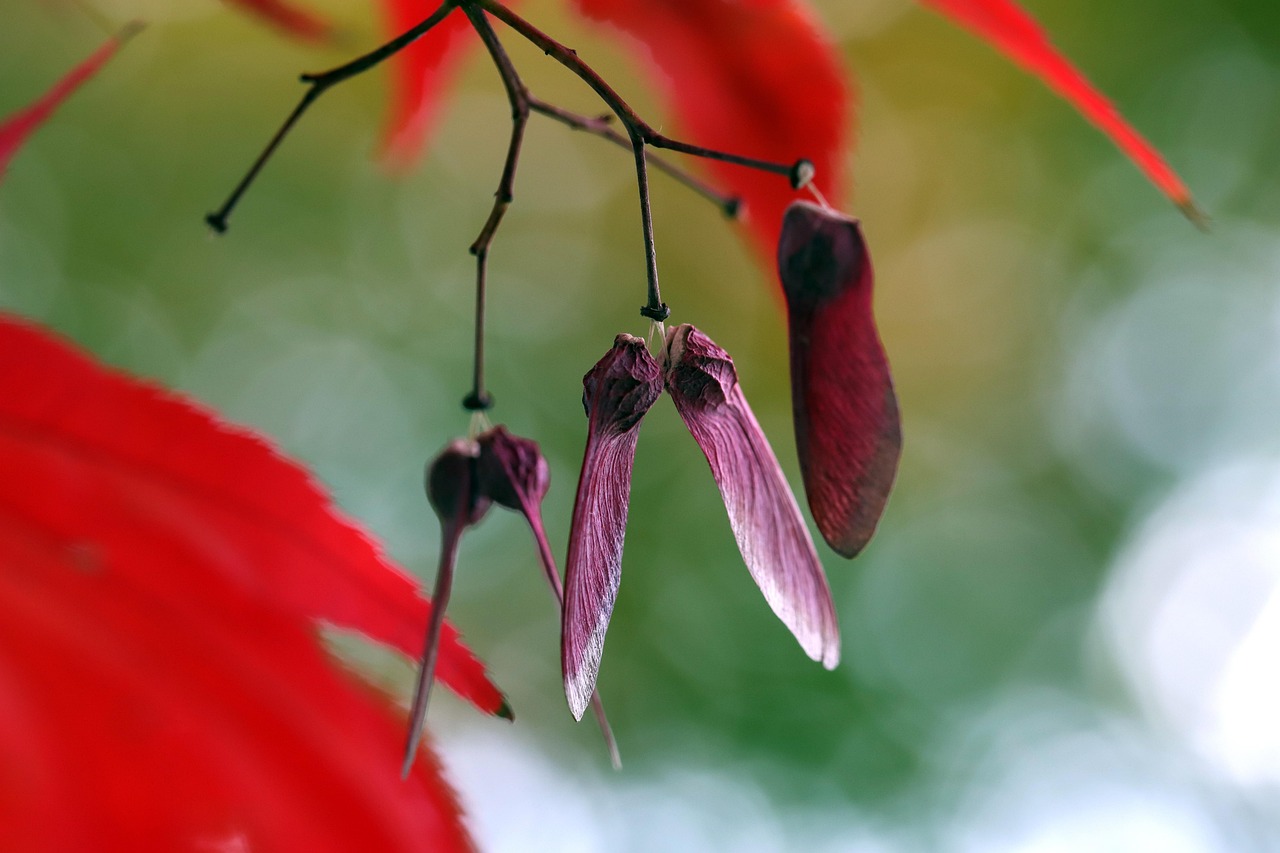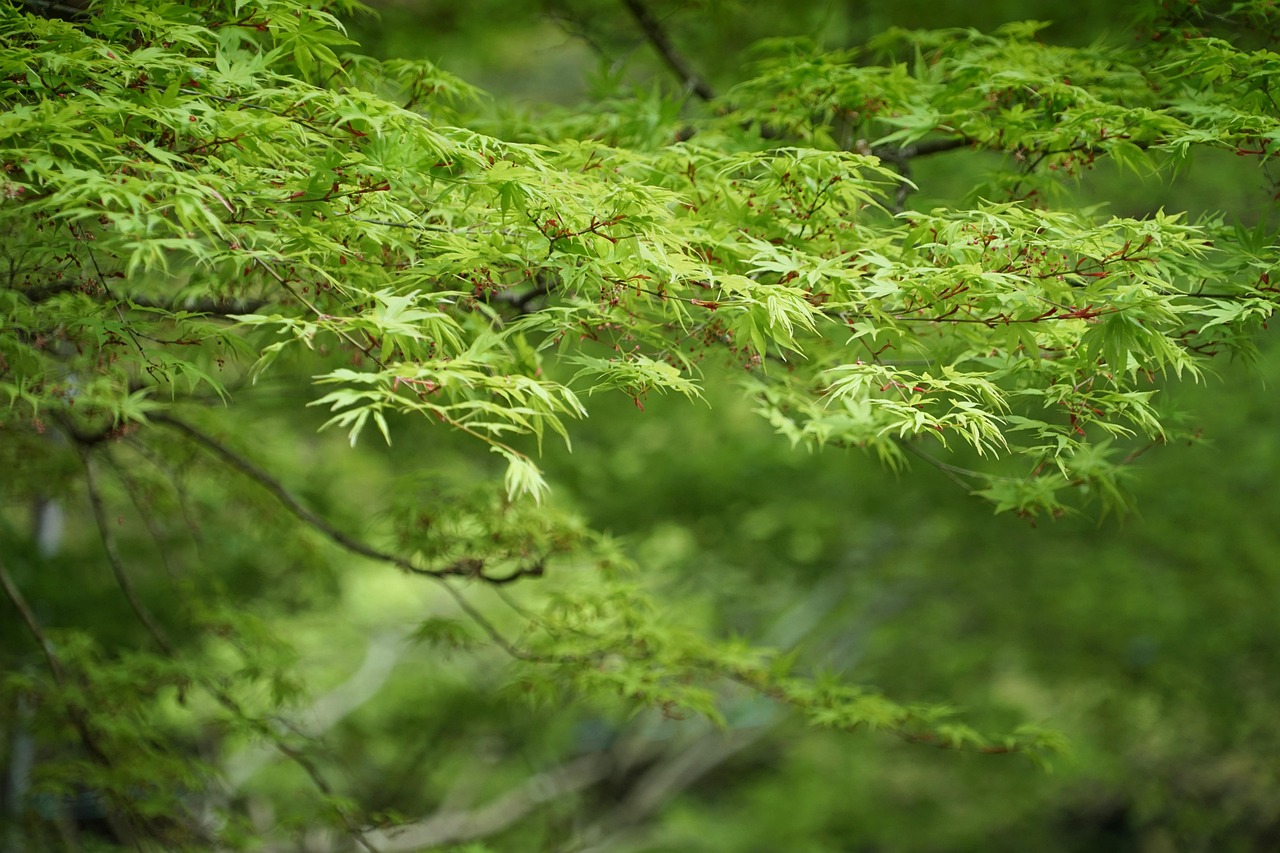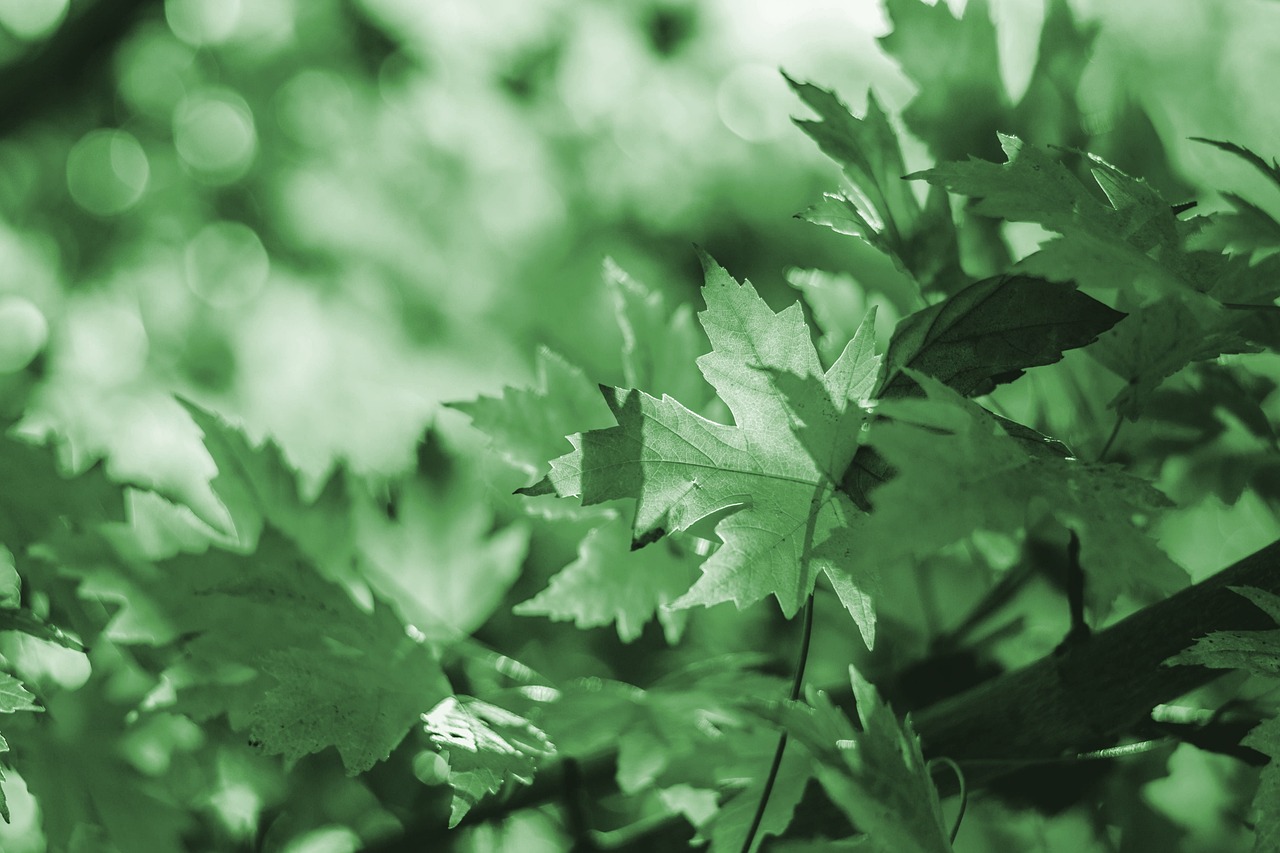Maple trees exhibit a moderate growth rate, typically reaching height increments of 1 to 3 feet per year. Seasonal variations significantly influence this growth, with most active growth occurring in spring and early summer, while dormancy sets in during winter.
Understanding Maple Tree Growth
Maple trees are beloved for their stunning foliage and impressive size. They belong to the genus Acer and include many species, each with unique characteristics. Growth rates can vary widely depending on the specific type of maple, environmental conditions, and care practices.

In general, maples are known to grow moderately fast. Factors such as soil quality, moisture levels, sunlight exposure, and temperature impact their growth rates. Understanding these factors can help gardeners and landscapers foster optimal growth conditions.
Key Factors Affecting Growth Rate
Several key factors influence the growth rate of maple trees:
- Species: Different species of maple trees have distinct growth rates. For example, the Silver Maple (Acer saccharinum) is known for its rapid growth, while the Sugar Maple (Acer saccharum) grows more slowly.
- Soil Quality: Nutrient-rich, well-draining soil promotes healthier growth. Maples thrive in loamy soils that retain moisture without becoming waterlogged.
- Water Availability: Adequate watering during dry spells is crucial. However, overwatering can lead to root rot, hindering growth.
- Sunlight Exposure: Maple trees prefer full sun to partial shade. Sufficient sunlight encourages photosynthesis, which is vital for growth.
- Temperature: Ideal temperatures for maple growth are typically between 65°F and 75°F during the growing season.
Seasonal Growth Variations
The growth of maple trees is closely tied to the seasons. Understanding these seasonal variations helps in predicting and managing growth effectively.

In spring, as temperatures rise and daylight increases, maple trees awaken from dormancy. This is the period when they begin to produce new leaves and stems. The sap flow also starts during this season, particularly in species like the Sugar Maple.
Summer is typically the peak growing season for most maples. During this time, they experience rapid growth due to warm temperatures and increased sunlight. The combination of these factors leads to significant height gains and the development of vibrant foliage.
Growth Patterns Throughout the Year
The following table outlines typical growth patterns of maple trees throughout the seasons:

| Season | Growth Activity | Key Changes |
|---|---|---|
| Spring | Active Growth Begins | New leaves emerge; sap flow begins. |
| Summer | Peak Growth Phase | Maximum height increase; leaf development peaks. |
| Fall | Preparation for Dormancy | Leaves change color; growth slows significantly. |
| Winter | Dormant Phase | No growth; tree conserves energy. |
As fall approaches, maple trees prepare for dormancy. This preparation involves changing leaf colors due to chlorophyll breakdown and nutrient reabsorption into the roots. During winter, maples enter a dormant phase where all growth ceases. This dormancy is essential for the tree’s health and allows it to conserve energy until favorable conditions return in spring.
By understanding the growth rates and seasonal variations of maple trees, enthusiasts can better appreciate these beautiful plants. Careful attention to environmental conditions will enhance their growth and longevity in gardens and landscapes.
Growth Rate Variations by Maple Species
Different species of maple trees exhibit varying growth rates. Understanding these distinctions can help gardeners and landscapers select the right type for their environment. Below are some of the most common species and their respective growth characteristics.
Common Maple Species
- Red Maple (Acer rubrum): This species is known for rapid growth, often reaching heights of 40 to 60 feet. It can add 2 to 3 feet of height per year under optimal conditions.
- Silver Maple (Acer saccharinum): One of the fastest-growing maples, the Silver Maple can grow up to 3 feet per year. It typically reaches heights of 50 to 70 feet and thrives in moist soils.
- Sugar Maple (Acer saccharum): Known for its beautiful foliage and sweet sap, the Sugar Maple grows more slowly than its counterparts, averaging 1 to 2 feet per year and reaching heights of up to 75 feet.
- Norway Maple (Acer platanoides): This species grows relatively quickly, often reaching heights of 40 to 50 feet with a growth rate of about 2 to 4 feet per year. It is adaptable to various soil types.
Growth Rate Influenced by Location
The geographical location where a maple tree is planted significantly affects its growth rate. Variations in climate, soil conditions, and local environmental factors can either enhance or hinder growth. Here are key influences:

Climate
Maple trees prefer temperate climates. Regions with cold winters and warm summers generally provide the best conditions for growth. However, extreme temperature fluctuations can negatively impact their growth and health.
Soil Type and Quality
Soil quality plays a crucial role in the overall health and growth rate of maple trees. Here are some soil types that affect growth:
- Loamy Soil: This type is ideal for maples as it retains moisture while allowing for good drainage.
- Sandy Soil: While it drains well, sandy soil can dry out too quickly, leading to stress for the tree.
- Clay Soil: This soil type can retain water but may lead to poor drainage, which can harm maple roots.
Impact of Care Practices on Growth Rate
Caring for maple trees properly can enhance their growth rate significantly. Here are essential practices that contribute to healthy growth:
Watering
Regular watering is critical, especially during dry spells. Newly planted maples require consistent moisture until they establish their root systems. Here are some tips:
- Water deeply but infrequently to encourage deep root growth.
- Avoid waterlogging; ensure adequate drainage in the planting site.
Fertilization
Applying fertilizer can provide essential nutrients that may be lacking in the soil. Consider the following:
- Use a balanced fertilizer during the growing season.
- A soil test can help determine specific nutrient needs before fertilization.
Pruning
Regular pruning helps manage tree shape and encourages healthy growth. Important points include:
- Remove dead or diseased branches to promote better airflow.
- Shape the tree in early spring before new growth begins.
Pests and Diseases Affecting Growth
Pests and diseases can severely impact the growth rate of maple trees. Recognizing common threats allows for timely intervention.
| Pest/Disease | Description | Effects on Growth |
|---|---|---|
| Maple Borer | A wood-boring insect that damages the inner bark. | Can lead to decline in tree vigor and increased susceptibility to disease. |
| Anthracnose | A fungal disease causing leaf spots and premature leaf drop. | Weakens trees by reducing photosynthesis during critical growth periods. |
| Powdery Mildew | A fungal disease characterized by white powdery spots on leaves. | This can reduce photosynthetic efficiency, impacting overall growth. |
Understanding pests and diseases is essential for maintaining healthy maple trees. Regular monitoring and appropriate treatment can help mitigate these issues and support robust growth throughout the seasons.
Optimal Conditions for Maple Tree Growth
To ensure the healthiest growth possible, maple trees thrive under specific environmental conditions. Understanding these factors can greatly enhance their growth rates and overall health. Below are essential conditions that should be considered when planting and caring for maple trees.
Sunlight Requirements
Maple trees generally prefer full sun to partial shade. Adequate sunlight is crucial for photosynthesis, which fuels growth. Here are some key points regarding sunlight exposure:
- Full Sun: Ideally, maple trees should receive at least 6 hours of direct sunlight each day.
- Partial Shade: While some species tolerate partial shade, reduced sunlight can hinder growth and result in leggy branches.
- Location: When selecting a location for planting, choose a spot that avoids excessive shade from surrounding structures or trees.
Soil Composition and pH Levels
The composition and pH of the soil play significant roles in the growth rate of maple trees. Here’s what to consider:
- Soil Type: Maple trees prefer loamy soils that are rich in organic matter. This type of soil retains moisture while allowing for proper drainage.
- pH Level: A slightly acidic to neutral pH range (between 6.0 and 7.5) is ideal for most maple species. Soil testing can help determine the pH and necessary amendments.
- Nutrient Availability: Fertile soil rich in nitrogen, phosphorus, and potassium will support healthy growth. Regular amendments, such as compost, can improve soil quality.
Watering Practices
Proper watering techniques are essential for maintaining healthy maple trees, especially during their early years. Here are some guidelines:
- Deep Watering: Water deeply to encourage root development. This means providing sufficient water to penetrate several inches into the soil.
- Frequency: Adjust watering frequency based on rainfall and temperature. Generally, established trees may require watering every 2 to 4 weeks during dry spells.
- Avoid Overwatering: Ensure that the soil has good drainage to prevent root rot. Check the moisture level before watering.
Seasonal Maintenance Strategies
Caring for maple trees involves seasonal maintenance to promote healthy growth throughout the year. Each season presents unique challenges and opportunities for growth enhancement.
Spring Care
Spring is a critical time for maple trees as they emerge from dormancy. Here are some spring care tips:
- Fertilization: Apply a balanced fertilizer to support new growth as leaves begin to unfurl.
- Pruning: Conduct any necessary pruning in early spring before new buds appear to shape the tree and remove dead or diseased branches.
- Pest Monitoring: Keep an eye out for early signs of pests or diseases as the weather warms up.
Summer Care
During the summer months, continuous care is essential to ensure that maple trees remain healthy and vigorous:
- Irrigation: Make sure the tree receives adequate water, especially during hot, dry spells.
- Mulching: Apply organic mulch around the base of the tree to retain soil moisture and regulate temperature.
- Pest Control: Continue monitoring for pests and diseases, addressing any issues promptly to minimize damage.
Fall Care
The fall season is a transition period as maple trees prepare for dormancy. Proper care during this time will set the stage for healthy growth in the following spring:
- Leaf Cleanup: Rake fallen leaves to prevent diseases from overwintering on the ground.
- Final Watering: Ensure adequate moisture levels before winter arrives, especially if fall is dry.
- Soil Testing: A fall soil test can help determine if any amendments are needed before spring planting.
Winter Care
While maple trees enter dormancy during winter, care practices are still important:
- Protection from Frost: If young trees are planted in areas prone to severe frost, consider wrapping their trunks to protect against damage.
- Moisture Monitoring: Ensure that the soil remains adequately moist during warm spells to prevent desiccation of roots.
- Pest Inspection: Inspect the tree periodically for any signs of pests or disease that may have survived the winter.
By following these seasonal maintenance strategies, you can foster optimal growth rates in your maple trees while ensuring their long-term health and vitality.
Enhancing Growth Through Companion Planting
Companion planting can significantly benefit maple trees by promoting healthy growth and reducing pest issues. Certain plants, when grown alongside maples, can enhance soil quality and provide natural pest control. Here are some beneficial companions:
- Garlic: This plant can deter pests and improve soil health due to its natural antifungal properties.
- Chives: Similar to garlic, chives can repel insects and support a healthier growing environment for maples.
- Comfrey: Comfrey enriches the soil with nutrients while providing ground cover that can help retain moisture.
Incorporating these companion plants into the landscape can create a thriving ecosystem that supports the growth of maple trees.
Importance of Mulching
Mulching is another crucial practice that benefits maple tree growth. Applying a layer of organic mulch around the base of the tree offers several advantages:
- Moisture Retention: Mulch helps retain soil moisture, reducing the need for frequent watering.
- Weed Suppression: A good mulch layer suppresses weeds that compete for nutrients and water.
- Temperature Regulation: Mulch insulates the soil, helping to maintain a stable temperature for roots.
When applying mulch, it is essential to keep it several inches away from the trunk to prevent rot and allow for proper airflow.
Long-Term Growth Expectations
Maple trees can live for many decades, with some species thriving for over a century. Understanding the long-term growth expectations helps set realistic goals for maintenance and care. Here are some factors to consider:
- Maturity Size: Most maple trees reach their full height between 20 to 30 years, depending on the species and conditions.
- Lifespan: Many species can live 75 to over 100 years, providing shade and beauty to landscapes for generations.
- Growth Rate Adjustments: Growth rates may slow as trees mature, shifting focus from height increase to canopy development.
The Role of Climate Change
Climate change is increasingly impacting tree growth patterns, including maple trees. Rising temperatures, altered precipitation patterns, and extreme weather events can affect maple health and growth rates. Some considerations include:
- Heat Stress: Higher temperatures can lead to heat stress, impacting growth rates and increasing susceptibility to pests.
- Drought Conditions: Changes in rainfall patterns may result in drier conditions, requiring increased irrigation efforts.
- Shifts in Growing Zones: Maple species may need to be planted in different hardiness zones as climate patterns change.
Staying informed about these changes will help gardeners adapt their practices to maintain healthy maple trees in a changing environment.
Conclusion
The growth rate of maple trees is influenced by various factors, including species, environmental conditions, seasonal variations, and care practices. By understanding these elements, tree enthusiasts can cultivate healthy and thriving maple trees in their landscapes. Companion planting, mulching, and proper seasonal care all contribute to optimal growth rates.
Moreover, awareness of climate change impacts is essential for ensuring the long-term health of maple trees. With careful attention to their needs and environment, maple trees can flourish, providing beauty and benefits for many years to come. Embracing these practices not only enhances their growth but also contributes positively to the ecosystem.
Ultimately, fostering the growth of maple trees is a rewarding endeavor that enhances both personal spaces and the greater environment. Their stunning seasonal transformations and long-lasting presence make them invaluable components of our landscapes.
